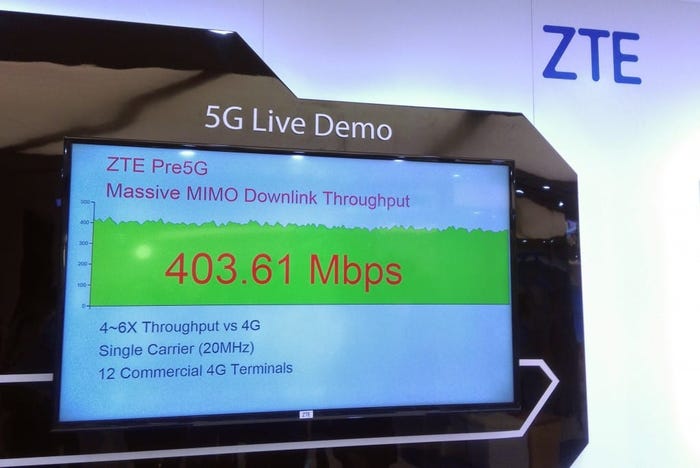ZTE Wireline SVP says NFV, SDN will take off in 2015ZTE Wireline SVP says NFV, SDN will take off in 2015
Chinese kit vendor ZTE’s SVP of Wireline, Jane Chen has said she believes 2015 is the year when network functions virtualisation (NFV) and software-defined networking (SDN) will take off and become commercial reality.
March 12, 2015

Chinese kit vendor ZTE’s SVP of Wireline, Jane Chen has said she believes 2015 is the year when network functions virtualisation (NFV) and software-defined networking (SDN) will take off and become commercial reality.
Talking to Telecoms.com at the Mobile World Congress 2015, Chen explained the importance of these new technologies to ZTE’s strategy and the approach the firm is taking to help operators migrate their networks onto software-based platforms. “Our vision for the wireline business is to create simplified, faster and open networks,” she said.
“We have a whole suite of products, we have our own, unique chips, and we have a unique platform. Based on these we are able to build simplified, more efficient networks. Openness [in networking] is also becoming more important, and with this in mind NFV and SDN are very important part of our wireline strategy.”
As reported last week, the vendor has already been working with China Mobile on a project to enhance the operator’s network scalability and efficiency with ZTE’s solution based on a mobile architecture integrated with NFV and SDN. Chen said the technology and skills are there and it is now ‘just’ the matter of assessing each customer case correctly to provide the right kind of a solution.
“I think these technologies will take off this year, many things are happening in this space. This is new for us, but technology is ready and products are ready- we just need to make sure we understand what the customer needs. I don’t think technology is a problem; the point is to understand the customer’s problem. What happens with technology, they [customers] need it [the right solution] but to first understand the problem correctly is the key.
“Different customers have different needs, and different networks have different needs. It’s not like with 4G, 3G or 2G where there is a standard and you just do it. With NFV and SDN each network layer needs its own solution. This is a migration process, it is not a revolution, and we assess our customers’ current situation and their network infrastructure topology to determine what exactly they need.”
Chen said she feels confident of ZTE’s ability to gain and retain long-term customer relationships even when the industry becomes more open and less and less tied to legacy systems. “I think this is an advantage for us, not a challenge. We like this because it gives us the change to demonstrate our strength to the customers.
“I think that if operators want to go down the open technology route, they will definitely always choose a good provider, they choose the one with the right strengths, the right people, one who can always meet their requirement. Someone who can always quickly demonstrate their strengths, and I think this will bring us more opportunities in the future, not less.”
At other technology fronts, ZTE also announced the publication of its M-ICT (mobile ICT) white paper just ahead of MWC 2015 outlining its product strategy in terms of the ‘era of universal mobile connectivity’. This includes ‘pre5G’ innovations, smart city and wireless charging for electric vehicles. At the event, the vendor demonstrated its pre5G pre-commercial base station, which uses massive MIMO technology and according to ZTE offers up to five times more spectral efficiency than a traditional base station.

ZTE pre5G base station demo screen at Mobile World Congress 2015
About the Author
You May Also Like










.png?width=300&auto=webp&quality=80&disable=upscale)


_1.jpg?width=300&auto=webp&quality=80&disable=upscale)